Evaluation of Cushioning Effect and Human Injury According to Occupant Posture and Use of Air Mat in Case of Elevator Fall
Abstract
:1. Introduction
2. Basic Theory for Injury Analysis and Evaluation
2.1. Elevator Specifications
2.2. Assessment of Injury Severity
3. Analysis of Human Injury
3.1. Free Fall
3.2. Safety Device Operation
3.3. NICs during Safety Device Operation
4. Conclusions
- (1)
- On cutting the elevator rope (free fall), the analysis revealed that all human body parts and joints ruptured after falling at 14 m/s from the 5th floor to the lowest floor, confirming that comparing the amount of impact and degree of injury according to the method was insignificant.
- (2)
- Activating the speed governor safety device (1.4 m/s uniform motion) was associated with a high possibility of fracture in the ankle area in both standing cases, i.e., standing with one or two individuals, respectively.
- (3)
- Activating the speed governor safety device (1.4 m/s uniform motion) was associated with a high possibility of fracture in the neck joint area in the scenario where a single individual was lying down. However, when two individuals were lying down, there was a high possibility that a neck joint fracture would not occur owing to the buffering action of the lower body.
- (4)
- If the governor safety device was operational (1.4 m/s constant velocity motion), the air mat afforded a buffering effect to a single individual lying down, similar to that observed when two individuals were lying down.
- (5)
- In the case of an elevator fall when the governor safety device is operational, the posture of an individual lying on the lower part of the individual to be protected affords a greater buffering effect than the standing position; the use of an air mat would yield a similar buffering effect.
- (6)
- In the case of a single individual lying down when the speed governor safety device is operational (1.4 m/s uniform motion), the overall degree of cervical spine injury would be low. In addition, inadequate mutual restraints were more likely to cause cervical spine injury than instances of perfect mutual restraint.
Funding
Institutional Review Board Statement
Informed Consent Statement
Data Availability Statement
Conflicts of Interest
References
- Korea National Elevator Information Center. Available online: https://www.elevator.go.kr/stat/accidentall.do (accessed on 20 July 2023).
- Nie, J.; Li, G.B.; Yang, J.K. A study of fatality risk and head dynamic response of cyclist and pedestrian based on passenger car accident data analysis and simulations. Traffic Inj. Prev. 2015, 16, 76–83. [Google Scholar] [CrossRef]
- Peng, Y.; Deck, C.; Yang, J.K.; Otte, D.; Willinger, R. A study of adult pedestrian head impact conditions and injury risks in passenger car collisions based on real world accident data. Traffic Inj. Prev. 2013, 14, 639–646. [Google Scholar] [CrossRef] [PubMed]
- Shi, S.; Catherine, M.; Maxime, L.; Max, P.; Quentin, F.; Pierre, J.A.; Ciaran, S. The predictive capacity of the MADYMO ellipsoid pedestrian model for pedestrian ground contact kinematics and injury evaluation. Accid. Anal. Prev. 2021, 149, 105803. [Google Scholar]
- Jie, S.; Zhengdong, L.; Shaoyou, P.; Hao, F.; Yu, S.; Ningguo, L.; Ping, H.; Donghua, Z.; Yijiu, C. Identification of pre-impact conditions of a cyclist involved in a vehicle–bicycle accident using an optimized MADYMO reconstruction combined with motion capture. J. Forensic Leg. Med. 2018, 56, 99–107. [Google Scholar]
- Donghua, Z.; Xian, Z.; Zhengdong, L.; Jie, S.; Jianhua, Z.; Ping, H.; Kaijun, M.; Yijiu, C. Prediction of injury risks and features among scooter riders through MADYMO reconstruction of a scooter-microvan accident: Identifying the driver and passengers. J. Forensic Leg. Med. 2019, 65, 15–21. [Google Scholar]
- Bartsch, A.; Morr, D.; Wiechel, J. Utilization of MADYMO to determine and verify occupant kinematics, kinetics and injury mechanisms during a real world collision. J. Biomech. 2006, 39 (Suppl. 1), S536. [Google Scholar] [CrossRef]
- Woering, M.H.; Depreitere, B.; Vander, S. Estimated and underreported parameters in report based vehicle-bicycle accident reconstructions have a significant influence. Accid. Anal. Prev. 2021, 150, 105903. [Google Scholar] [CrossRef] [PubMed]
- Elham, S.; Kennerly, D.; Dhafer, M.; Kim, R. High strength steels, stiffness of vehicle front-end structure, and risk of injury to rear seat occupants. Accid. Anal. Prev. 2014, 66, 43–54. [Google Scholar]
- Gennarelli, T.A.; Wodzin, E. A contemporary injury scale. Injury 2006, 37, 1083–1091. [Google Scholar] [CrossRef] [PubMed]
- Lesko, M.M.; Woodford, M.; White, L.; O’Brien, S.J.; Childs, C.; Lecky, F.E. Using Abbreviated Injury Scale (AIS) codes to classify Computed Tomography (CT) features in the Marshall System. BMC Med. Res. Methodol. 2010, 10, 72. [Google Scholar] [CrossRef] [PubMed]
- Abbreviated Injury Scale. University of Chicago: American Association for Automotive Medicine. 80p. 1985. Available online: http://www.thaincd.com/document/file/download/paper-manual/Abbreviated_injury_Scale_1985_revision.pdf (accessed on 20 July 2023).
- Peitzman, A.B.; Rhodes, M.; Schwab, C.W.; Yealy, D.M.; Fabian, T.C. The Trauma Manual; Lippincott Williams & Wilkins: Philadelphia, PA, USA, 2002; pp. 29–30. [Google Scholar]
- Kaneko, N.; Wakamatsu, M.; Fukushima, M.; Ogawa, S. Study of BioRID II Sled Testing and MADYMO Simulation to Seek the Optimized Seat Characteristics to Reduce Whiplash Injury. SAE Tech. Pap. 2004. [Google Scholar] [CrossRef]
- Zuby, D.S.; Vann, D.T.; Lund, A.K.; Morris, C.R. Crash Test Evaluation of Whiplash Injury Risk. In Proceedings of the 43rd Stapp Car Crash Conference, San Diego, CA, USA, 25–27 October 1999. Society of Automotive Engineers Technical Paper Series 95SC17. [Google Scholar]
- Park, S.J.; Chae, S.W.; Kim, E.S. Analysis of neck fractures from frontal collisions at low speeds. Int. J. Automot. Technol. 2002, 11, 441–445. [Google Scholar] [CrossRef]
- European New Car Assessment Programme, Technical Bulletin. Data Format and Injury Criteria Calculation. 2022. Available online: https://cdn.euroncap.com/media/69024/tb-021-data-acquisition-and-injury-calculation-v40.pdf (accessed on 20 July 2023).
- Croft, A.C.; Herring, P.; Freeman, M.D.; Haneline, M.T. The neck injury criterion: Future considerations. Accid. Anal. Prev. 2002, 34, 247–255. [Google Scholar] [CrossRef] [PubMed]

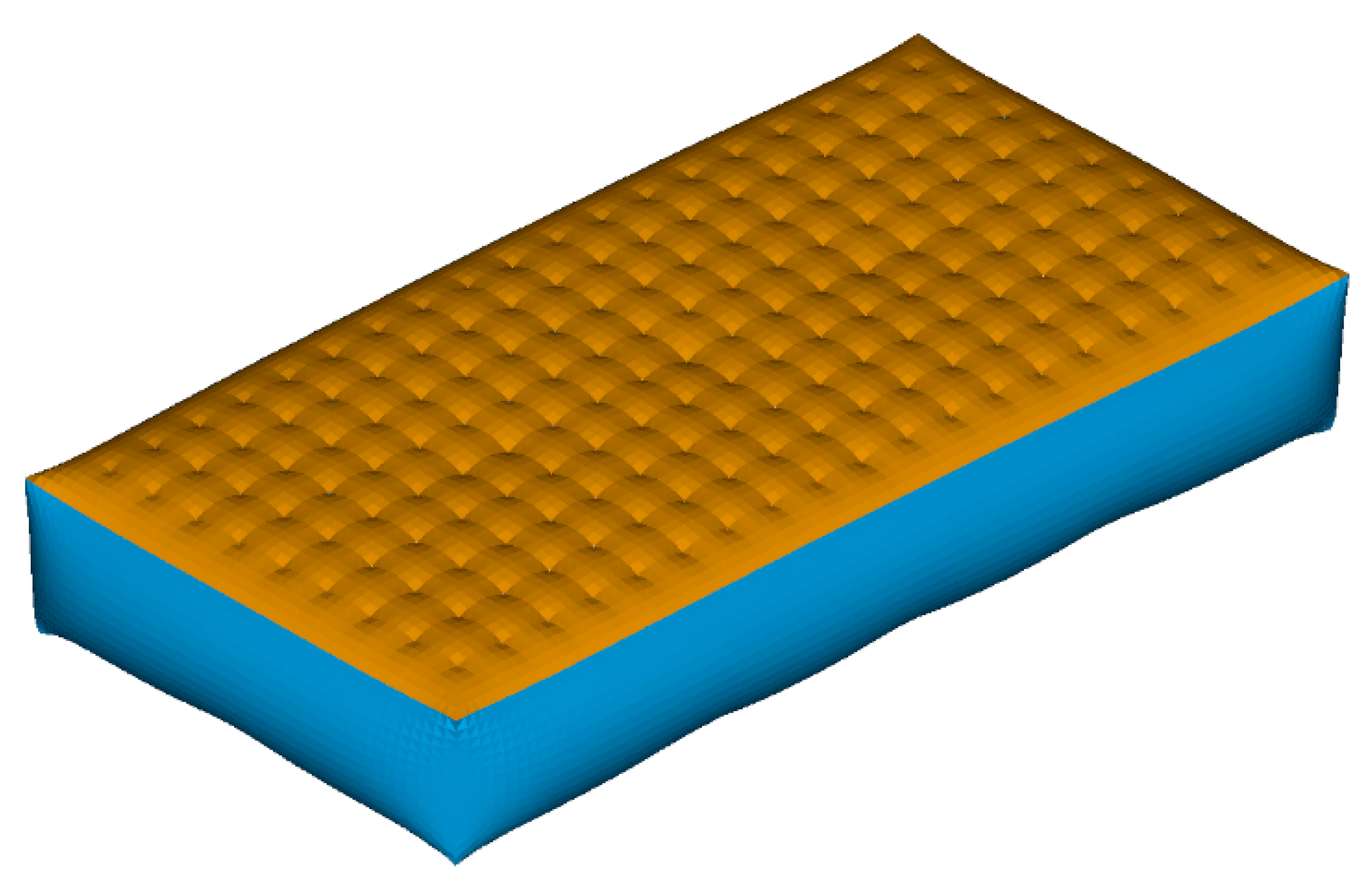

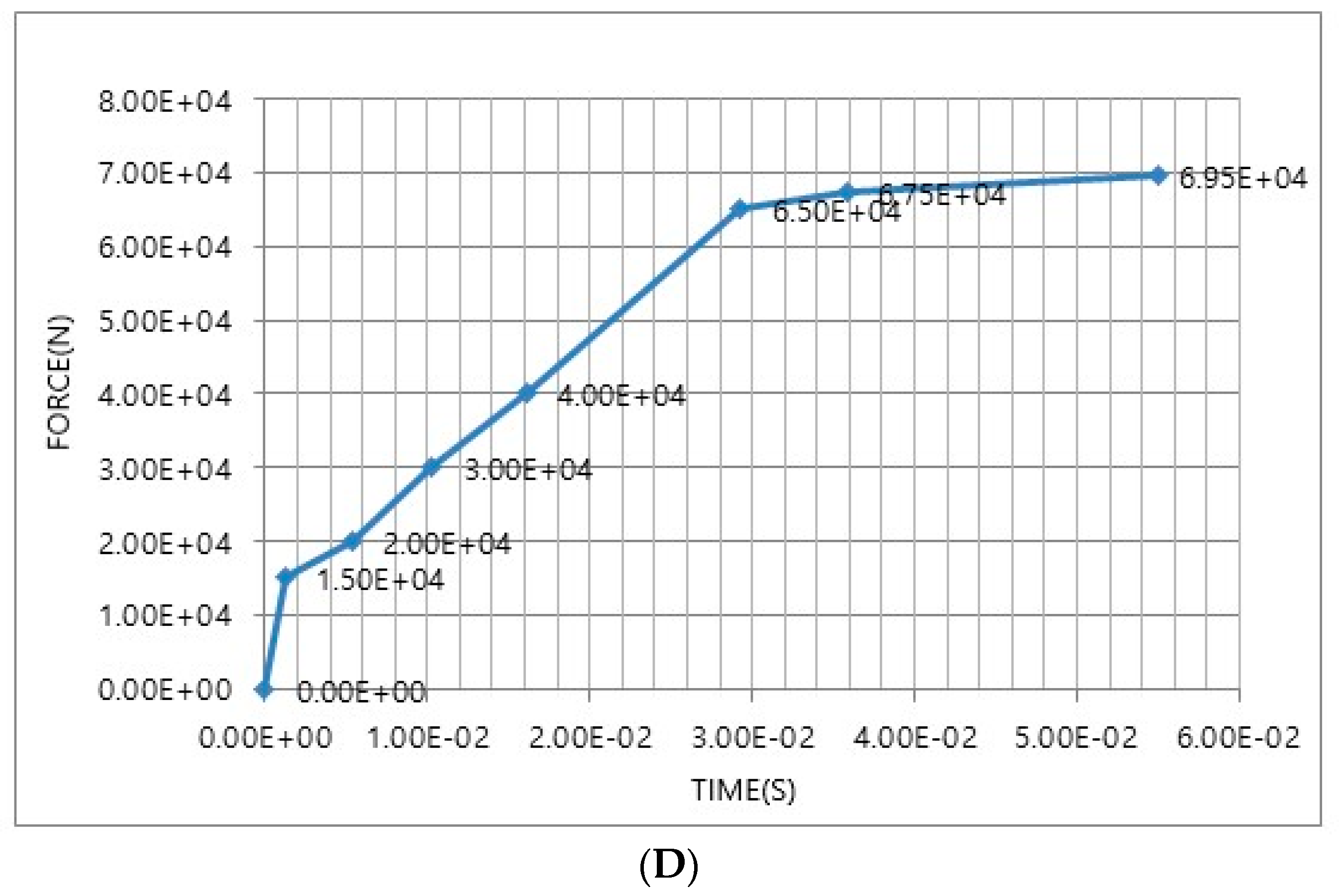
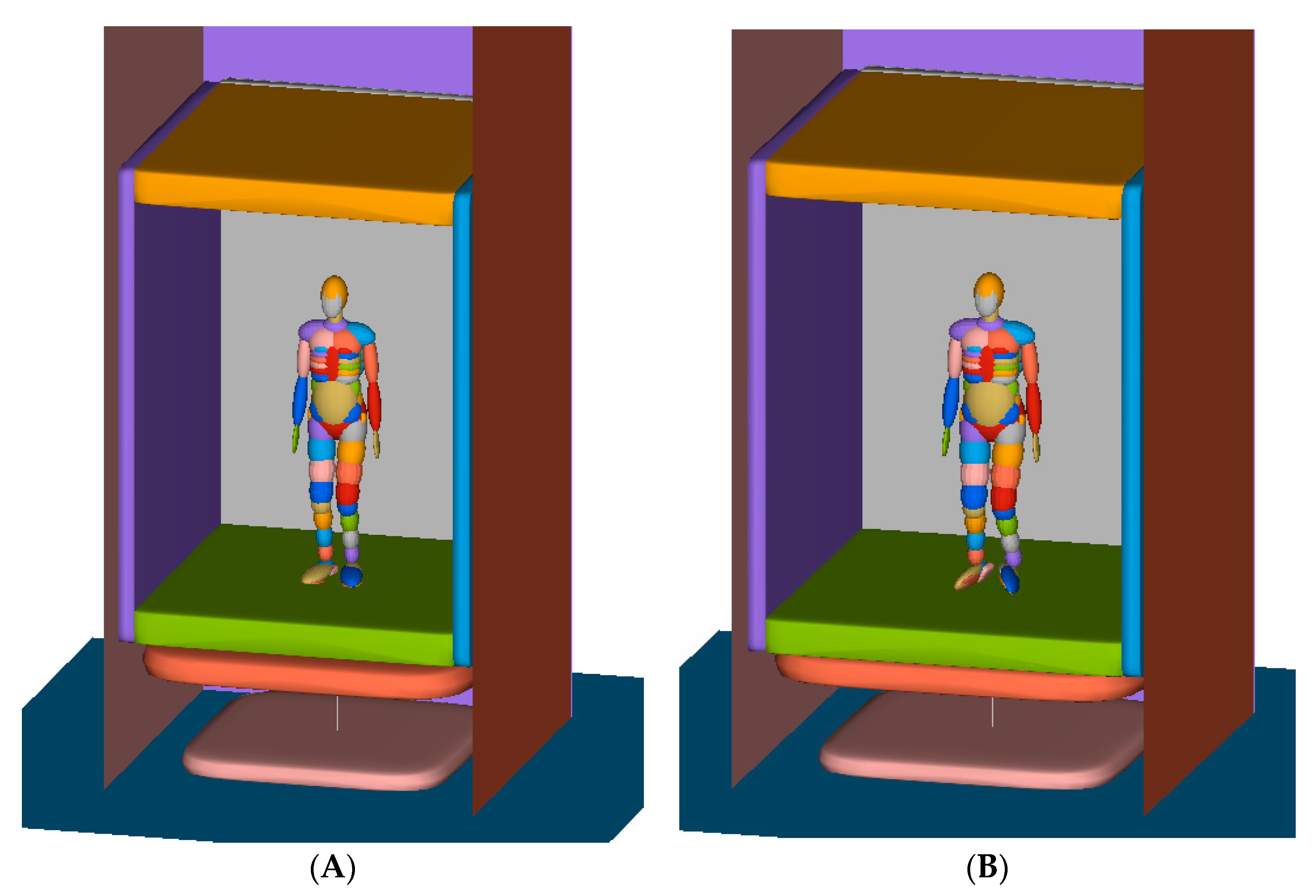
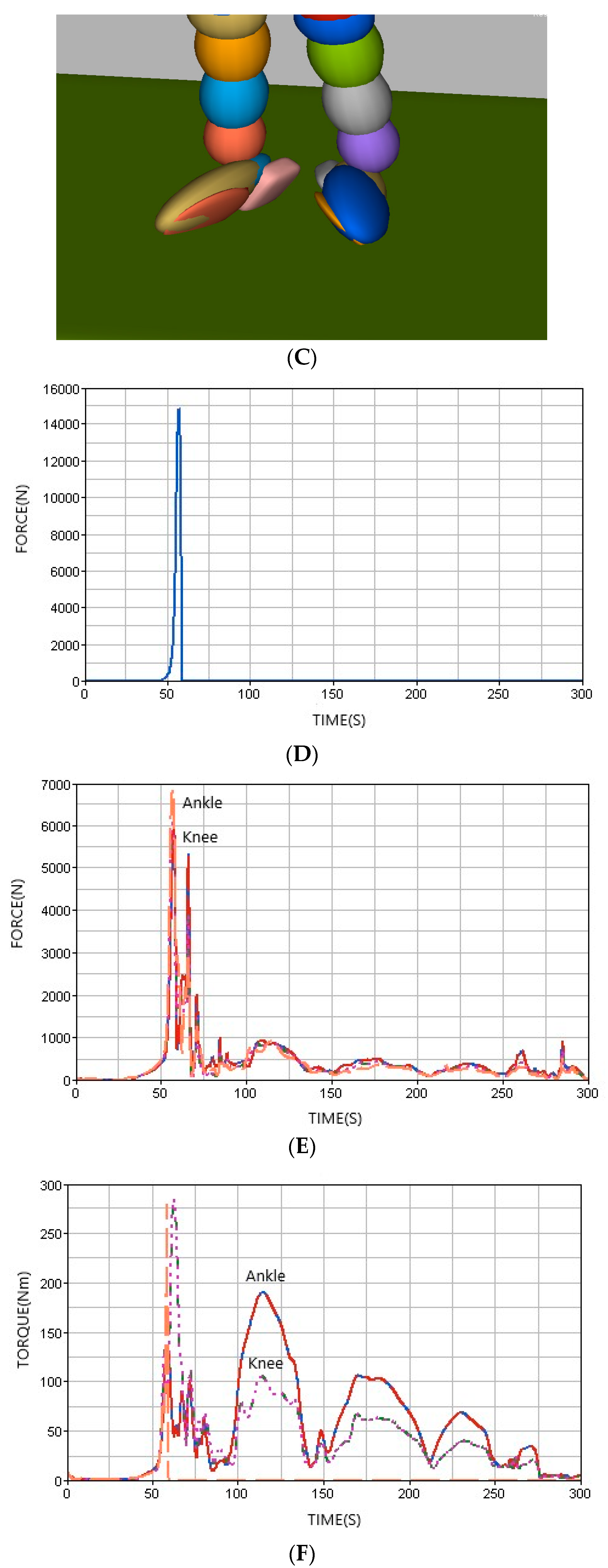

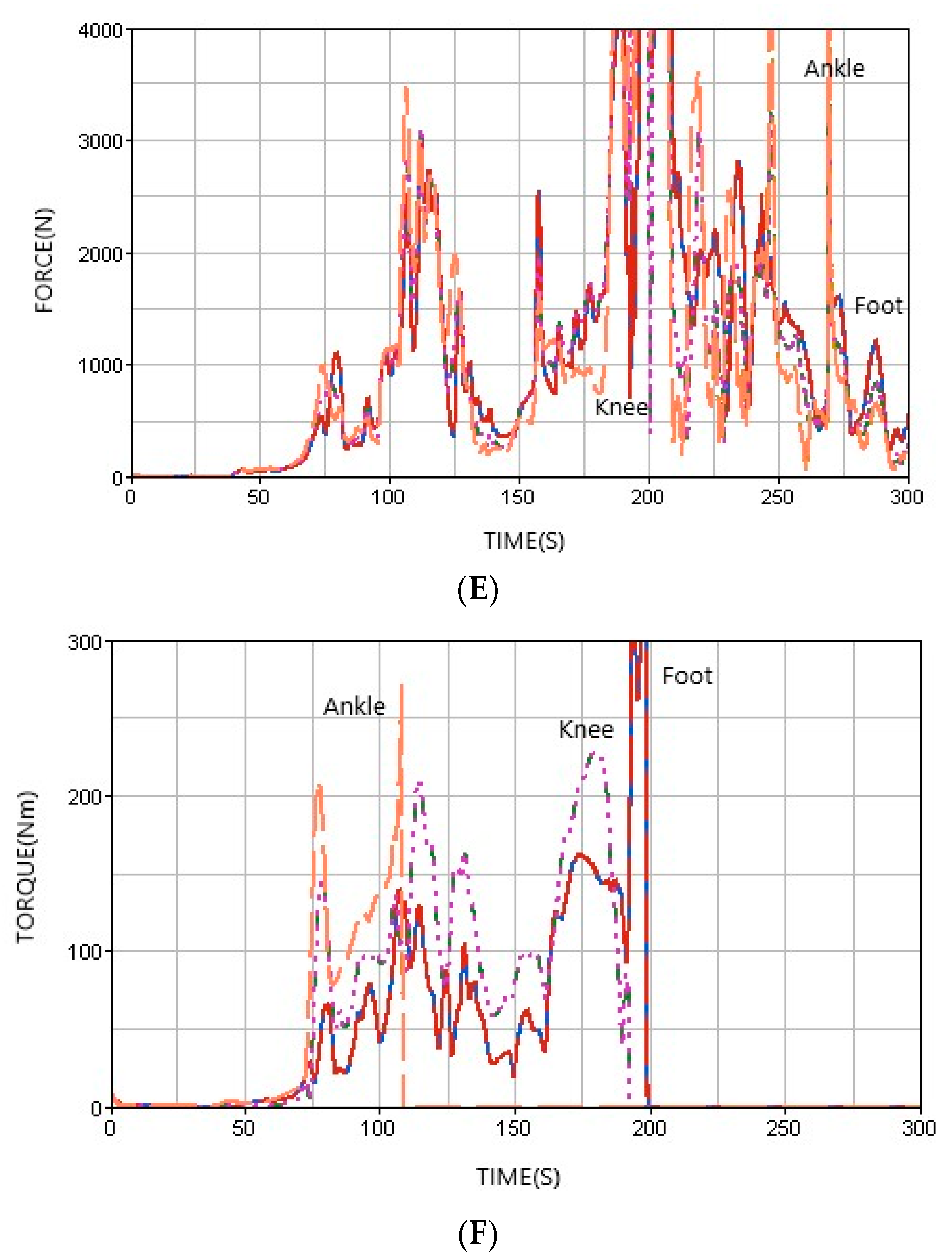
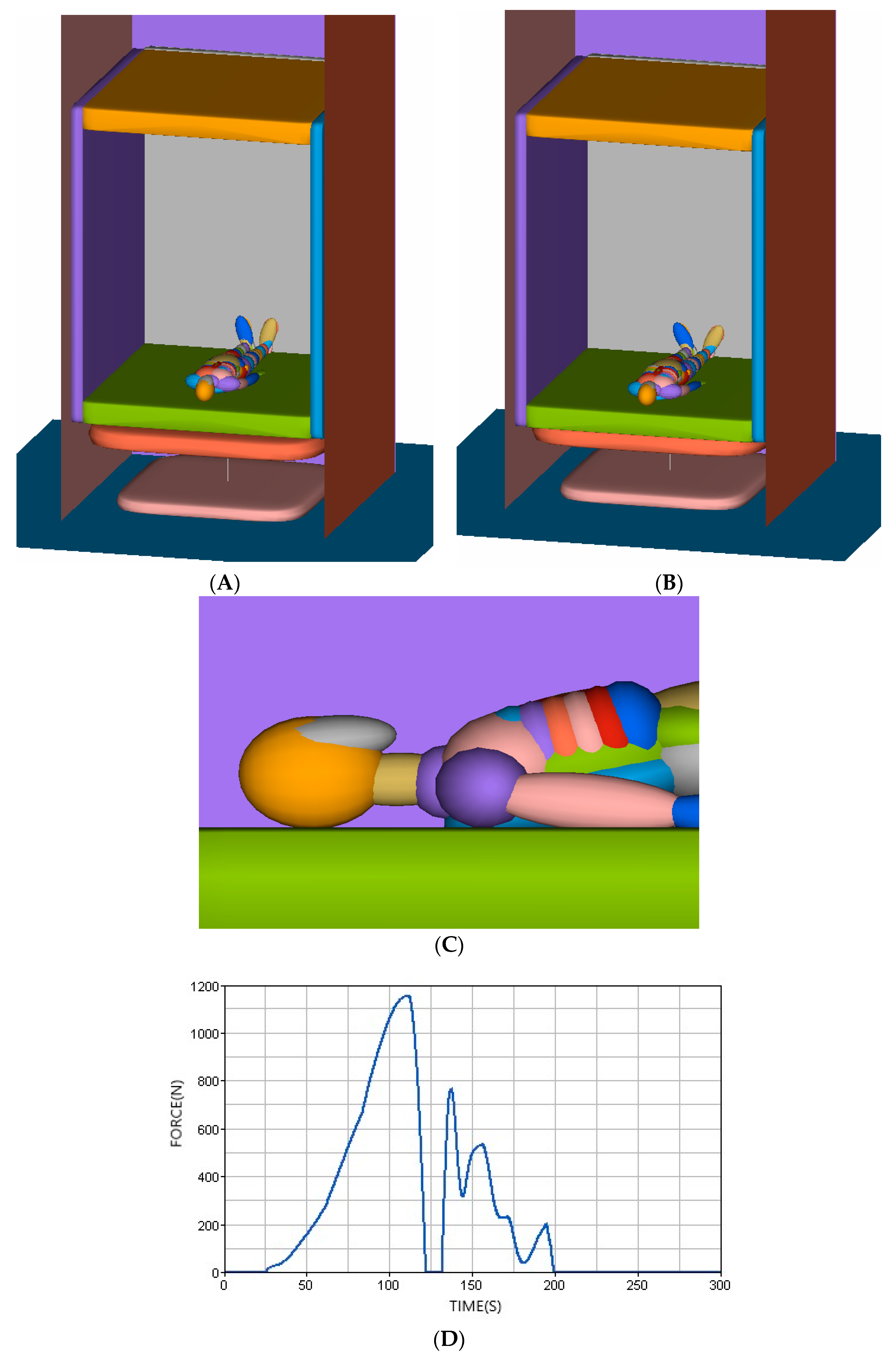
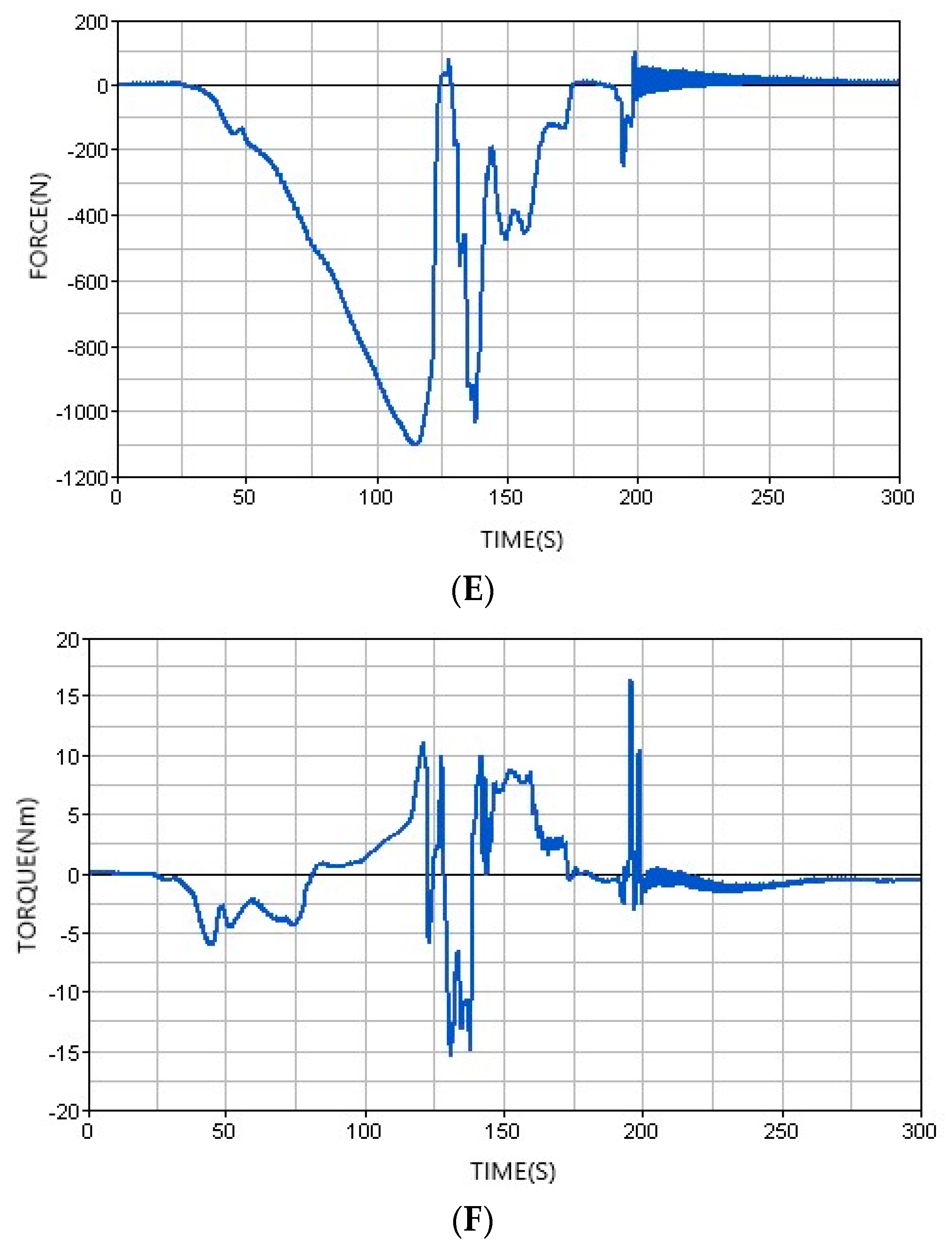
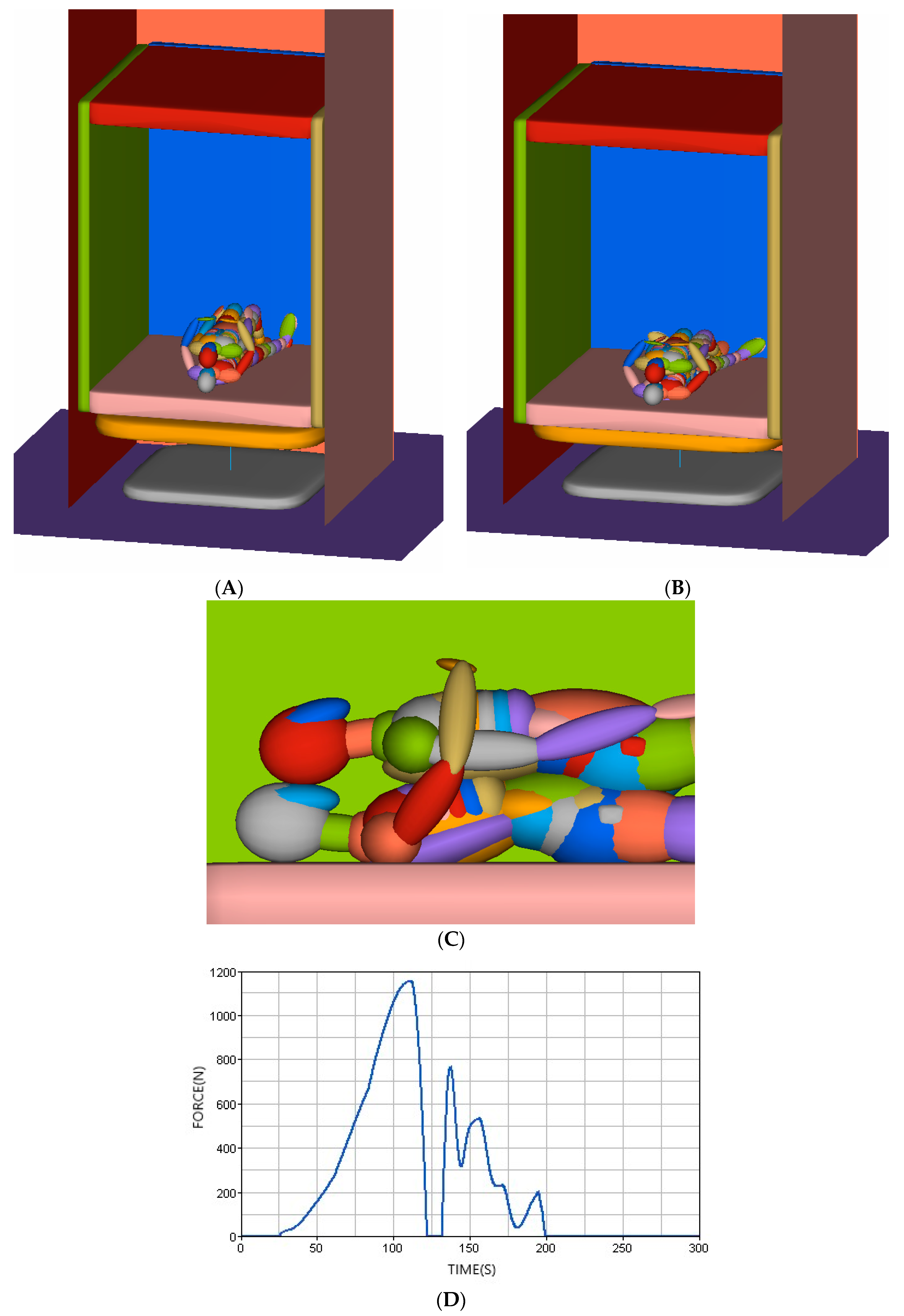
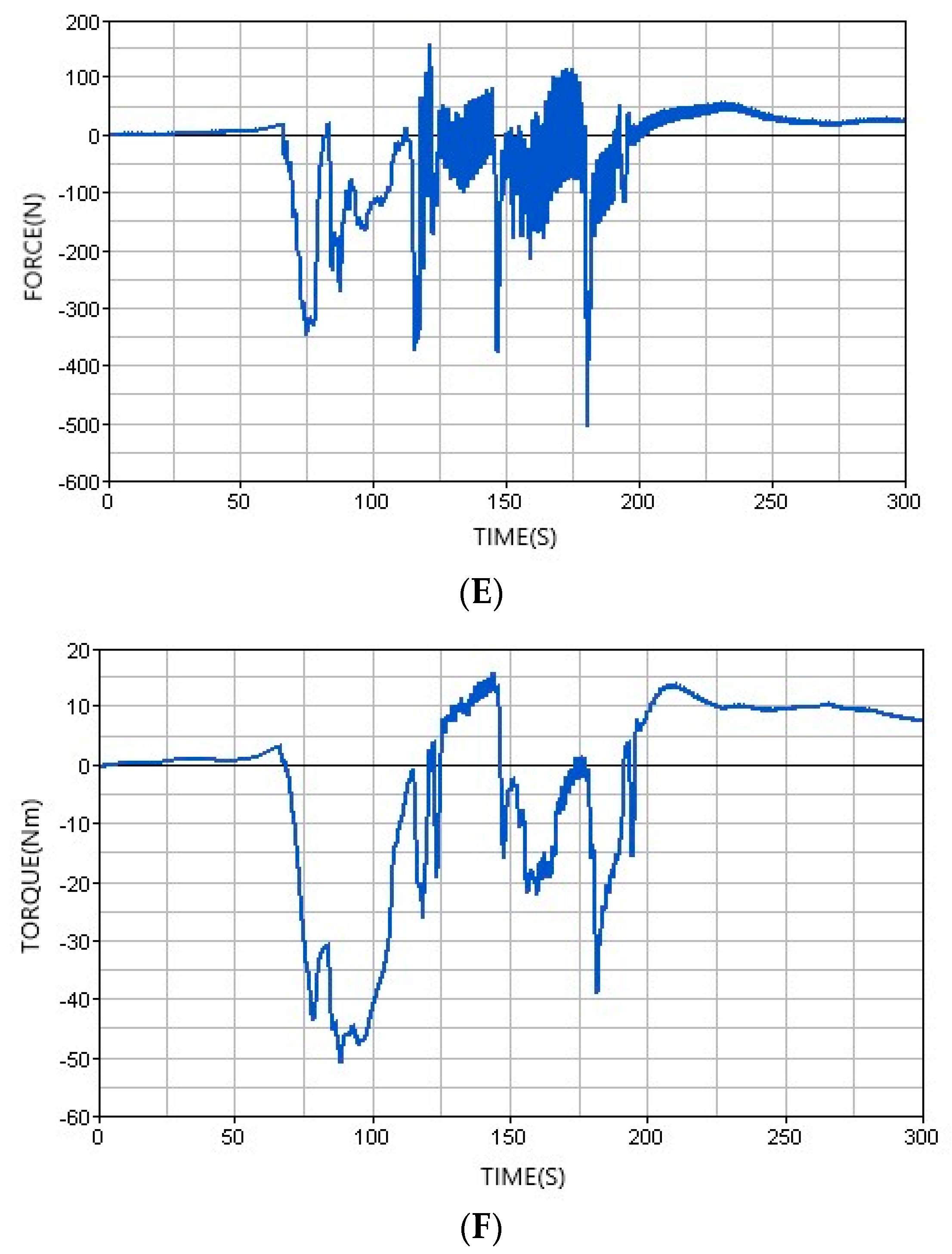
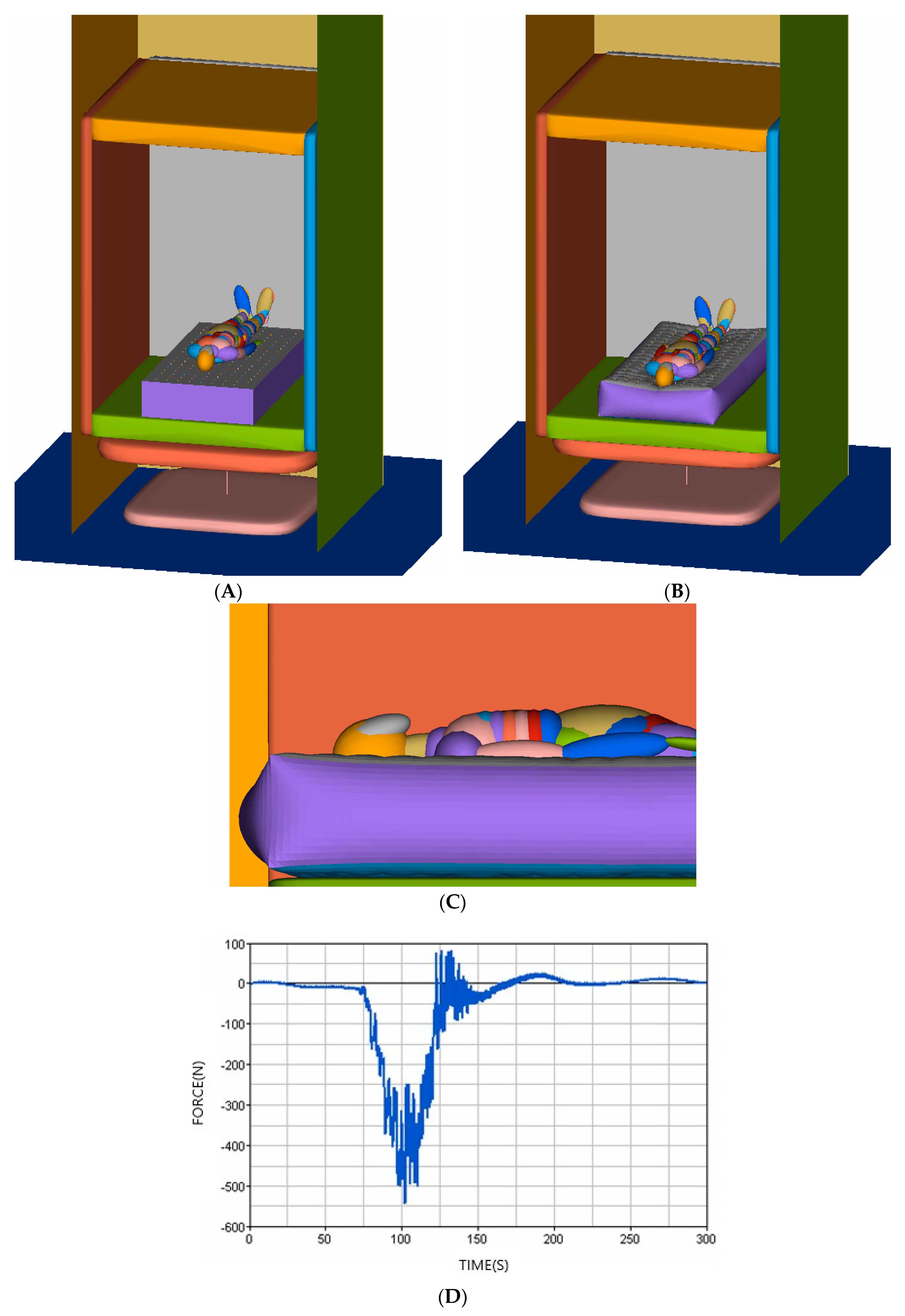
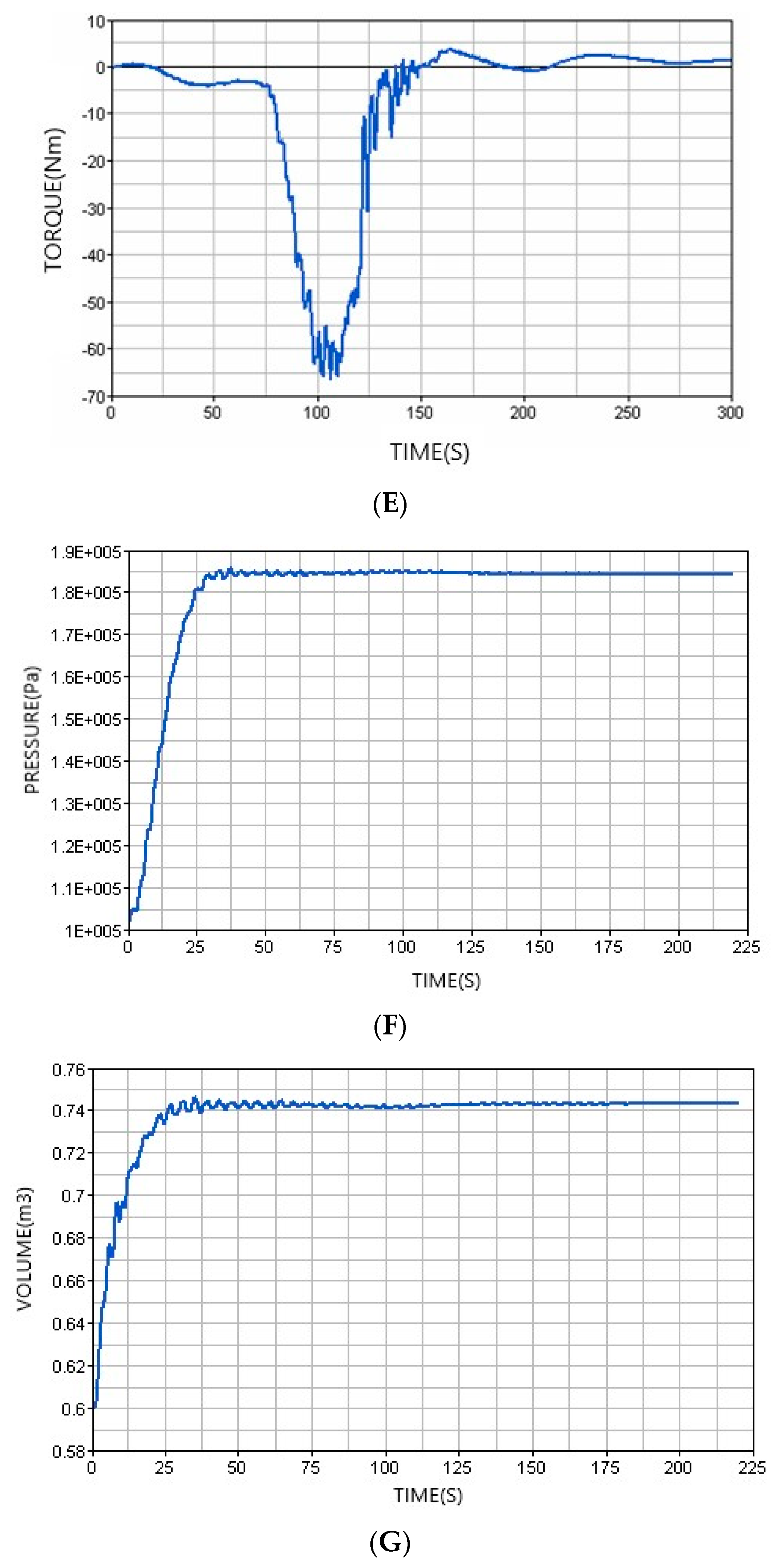
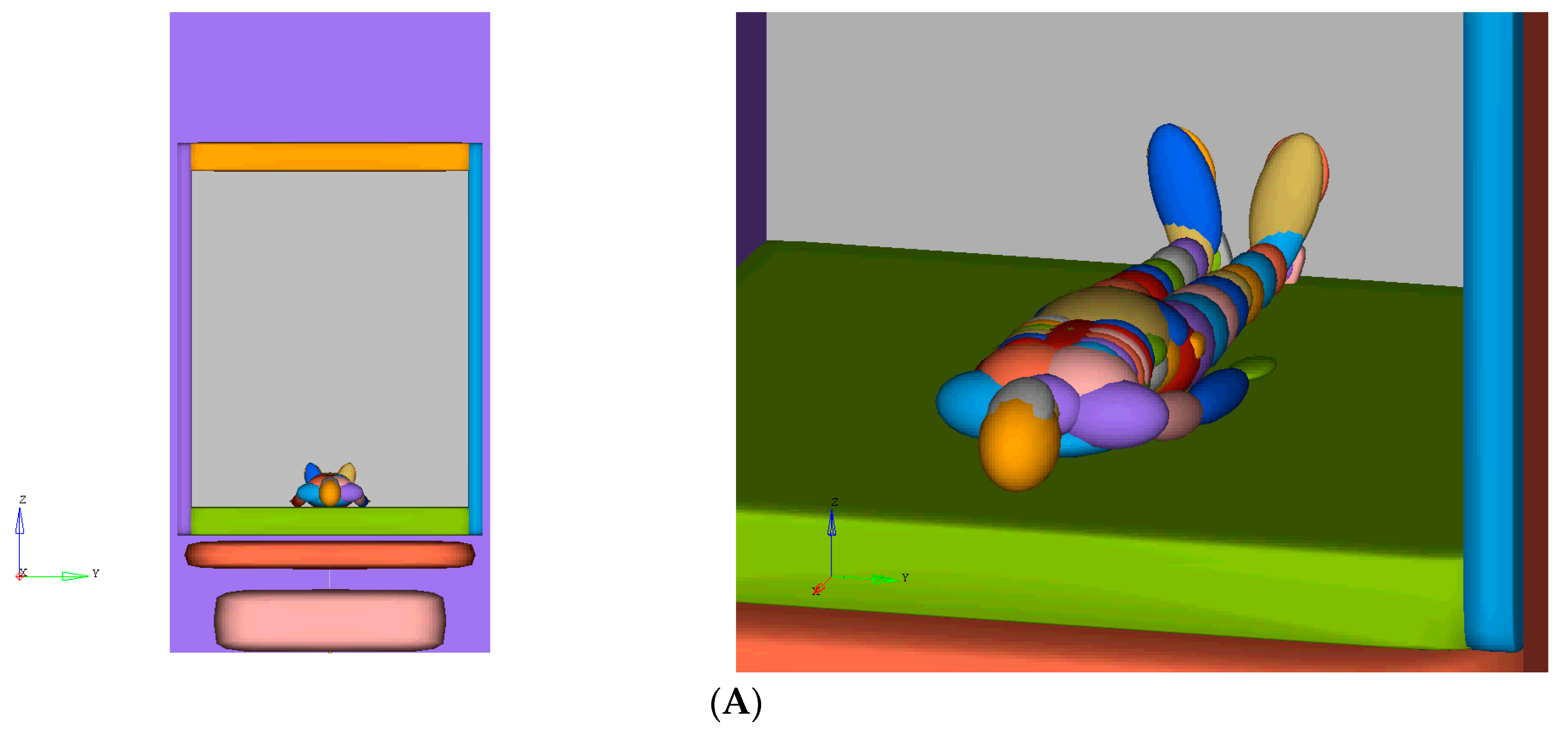
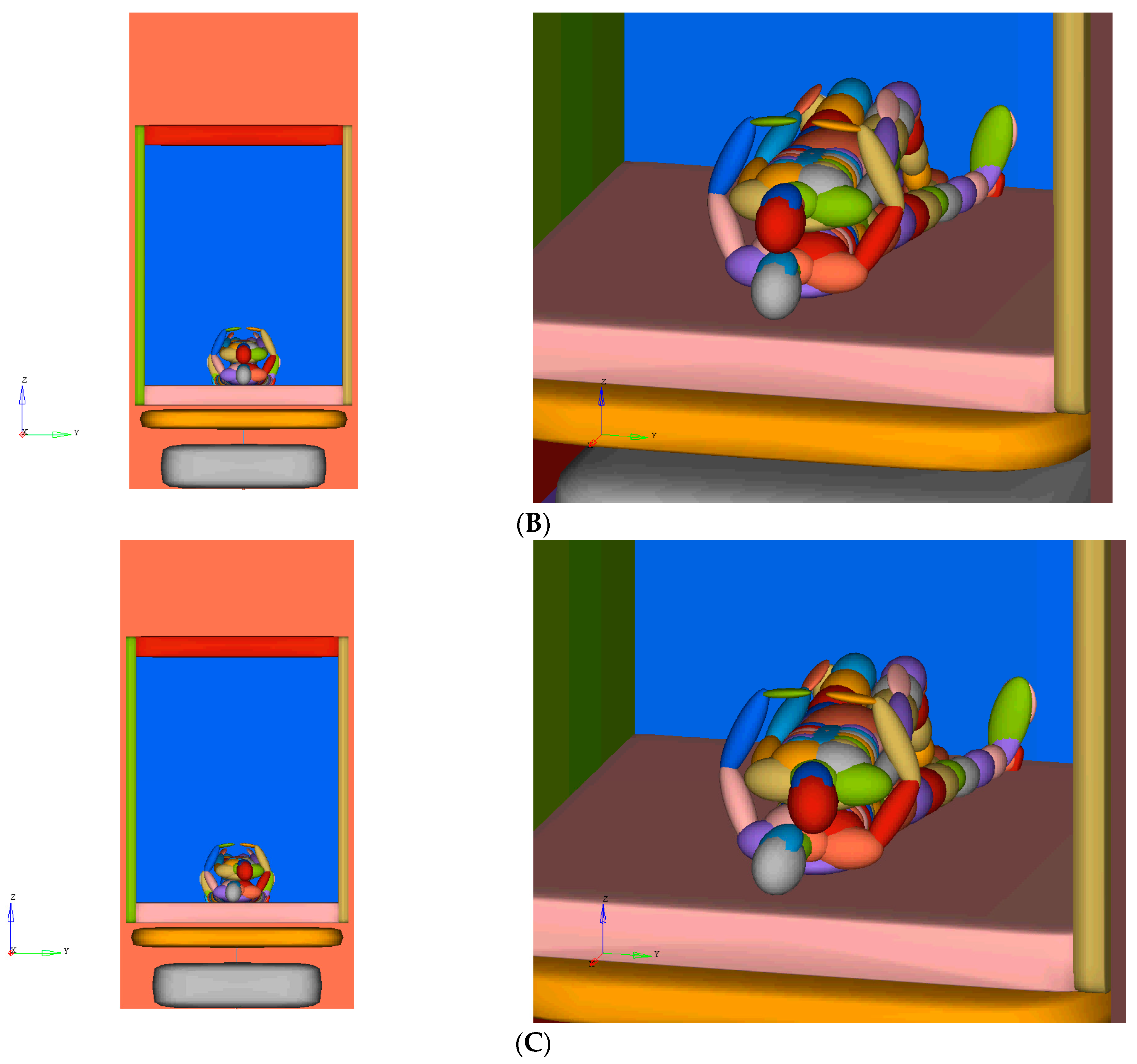
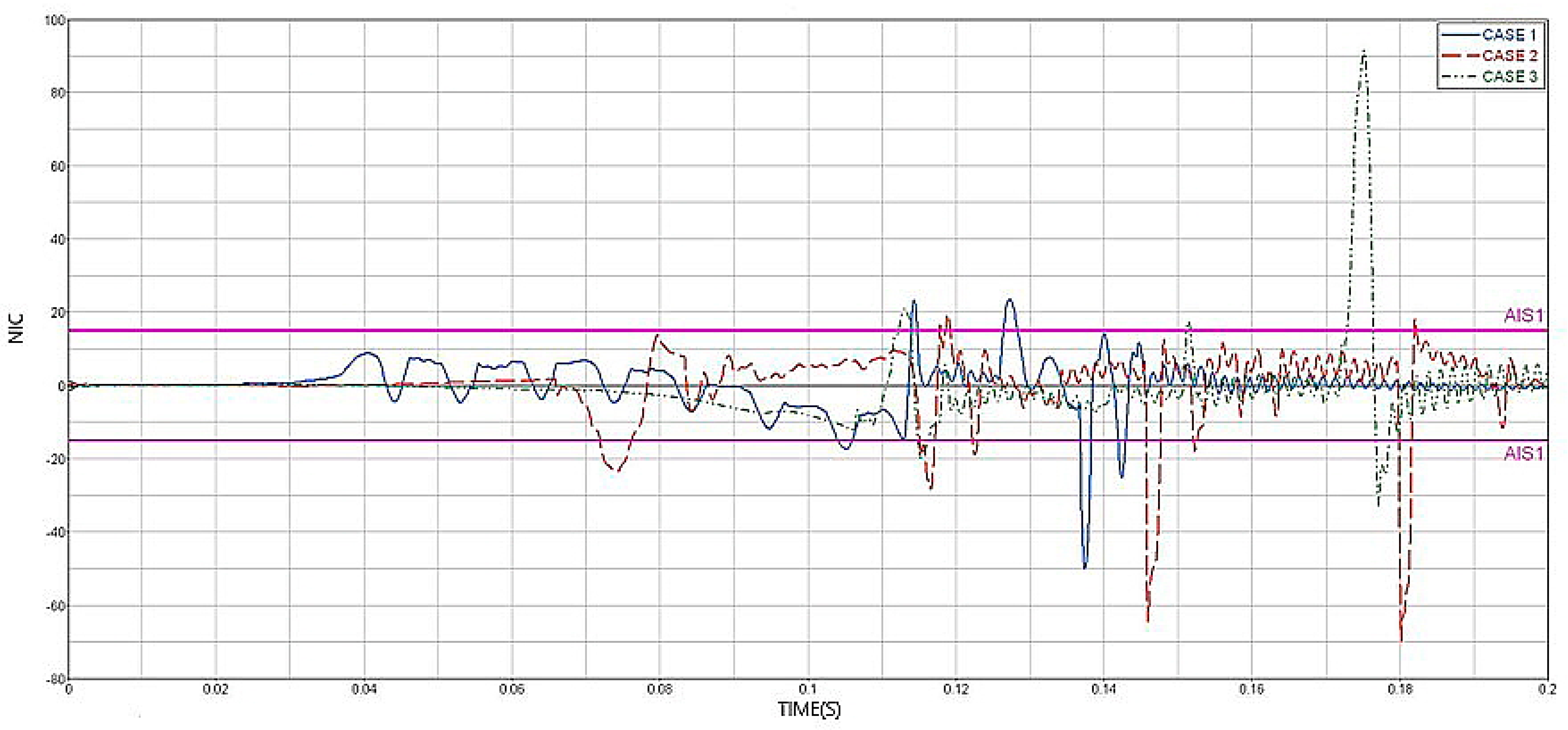
| No. | Floor | Height (m) | Fall Velocity (m/s) |
|---|---|---|---|
| 1 | 20 | 47.5 | 30.5 |
| 2 | 15 | 35.0 | 24.2 |
| 3 | 10 | 22.5 | 21.0 |
| 4 | 5 | 10 | 14.0 |
| Case No. | Case 1 | Case 2 | Case 3 | Case 4 | Case 5 |
|---|---|---|---|---|---|
| Condition | Single individual standing | Two individuals standing | Single individual lying down | Two individuals lying down | Single individual lying down using air mat |
| Case No. | Impact Force (N) | Impact Time (s) | Momentum (kg m/s) |
|---|---|---|---|
| 1 | 15,000 | 0.014 | 54,000 |
| 2 | 2000 | 0.035 | 14,000 |
| 3 | 1153 | 0.090 | 50,000 |
| 4 | 570 | 0.100 | 18,000 |
| 5 | - | - | - |
| Case No. | Injury Part | Maximum Force (N) | Maximum Torque (Nm) | Criteria (by EuroNCAP) |
|---|---|---|---|---|
| 1 | Ankle | 7000 | 285 | Limit Force: 4000 N Limit Torque: 285 Nm |
| 2 | Ankle | 3400 | 270 | |
| 3 | Neck | 1103 | 220 | Limit Force: 845 N Limit Torque: 88.1 Nm (AIS 1 Level) |
| 4 | Neck | 340 | 50 | |
| 5 | Neck | 390 | 56 |
| Case No. | Case 1 | Case 2 | Case 3 |
|---|---|---|---|
| Condition | Single individual lying down | Two individuals lying down with constraint | Two individuals lying down without constraint |
Disclaimer/Publisher’s Note: The statements, opinions and data contained in all publications are solely those of the individual author(s) and contributor(s) and not of MDPI and/or the editor(s). MDPI and/or the editor(s) disclaim responsibility for any injury to people or property resulting from any ideas, methods, instructions or products referred to in the content. |
© 2023 by the author. Licensee MDPI, Basel, Switzerland. This article is an open access article distributed under the terms and conditions of the Creative Commons Attribution (CC BY) license (https://creativecommons.org/licenses/by/4.0/).
Share and Cite
Kim, E.-S. Evaluation of Cushioning Effect and Human Injury According to Occupant Posture and Use of Air Mat in Case of Elevator Fall. Appl. Sci. 2023, 13, 10607. https://doi.org/10.3390/app131910607
Kim E-S. Evaluation of Cushioning Effect and Human Injury According to Occupant Posture and Use of Air Mat in Case of Elevator Fall. Applied Sciences. 2023; 13(19):10607. https://doi.org/10.3390/app131910607
Chicago/Turabian StyleKim, Eui-Soo. 2023. "Evaluation of Cushioning Effect and Human Injury According to Occupant Posture and Use of Air Mat in Case of Elevator Fall" Applied Sciences 13, no. 19: 10607. https://doi.org/10.3390/app131910607






